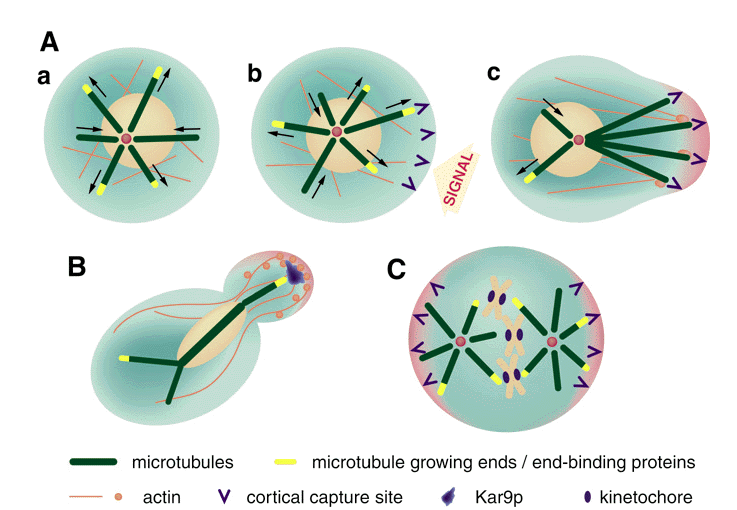

Figure 3. Microtubules and search-and-capture. (A) The microtubule ‘search-and-capture’ mechanism, modified from Kirschner and Mitchison (1986). (a) In unpolarized cells, microtubules interconvert between growing and shortening with no preferred direction by dynamic instability, which enables microtubules to explore all over the cellular space. The growing microtubule ends are always capped by microtubule end-binding proteins such as EB1. (b) A local spatial cue activates some microtubule-capturing site at the cell cortex. (c) Some microtubules are captured and selectively stabilized, which induces asymmetric orientation of the microtubule-based cytoskeleton. (B) In the budding yeast, the spindle microtubules originating from the spindle pole body on the nuclear envelope search for and capture the tips of daughter buds. The microtubule attachment to the cortex is mediated by interaction of EB1 (Bim1p) on the growing microtubule ends with Kar9p at the bud tip. (C) Microtubule ‘search-and-capture’ mechanism during mitosis of vertebrate cells. Microtubules search for the kinetochores or attachment sites on the cortex to capture the chromosomes or to orient spindle microtubules, respectively.
![]()